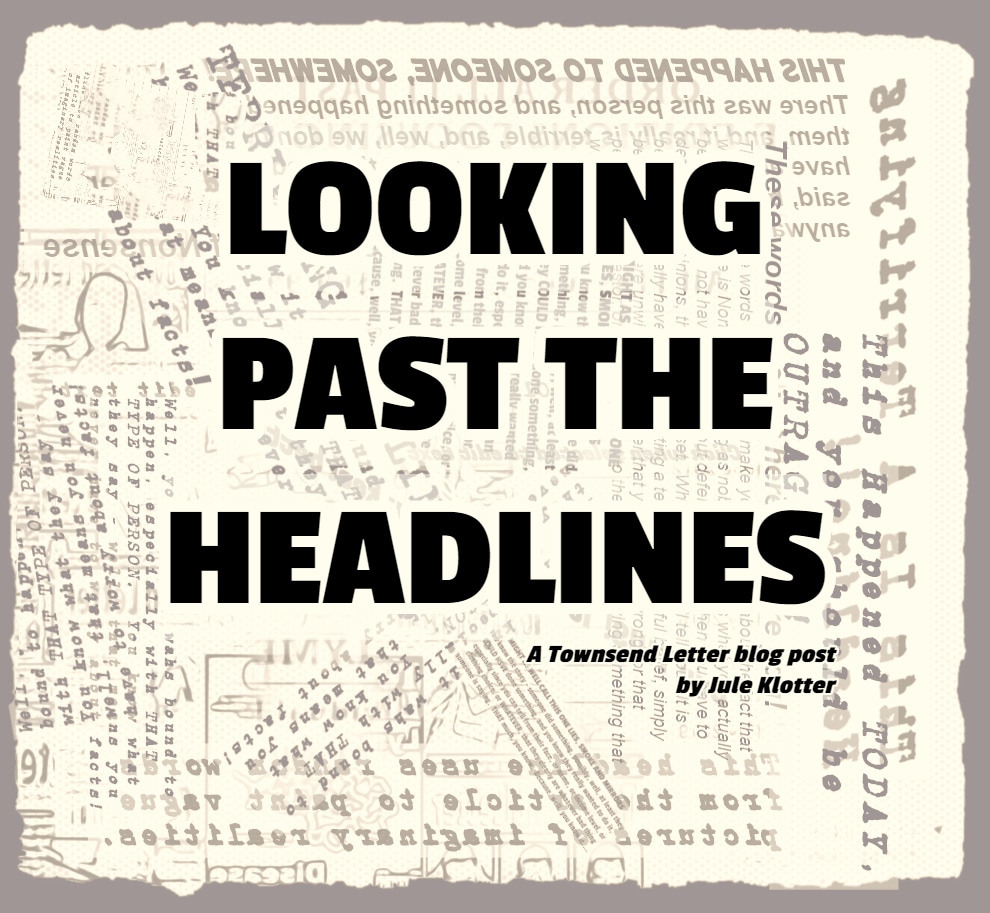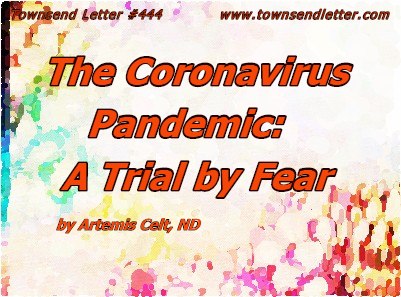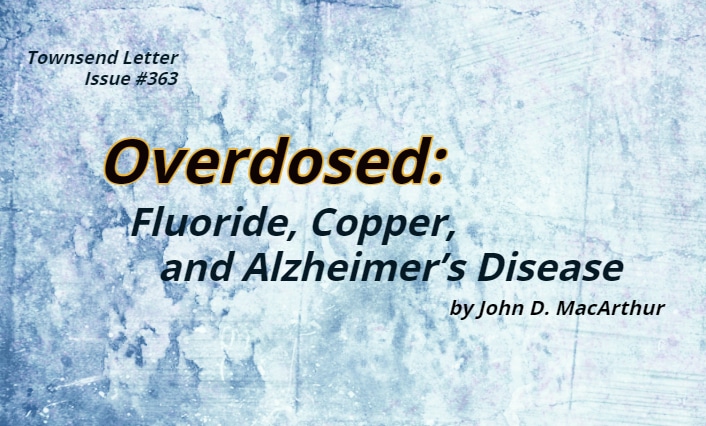article continued…
The guiding principle that one simply does not expose a child to any unnecessary risk has apparently been abandoned if they are on the receiving end of a vaccine. Of course, many medical interventions have the risk to cause harm but the risk of that harm may be very small provided effective measures are in place, such as making sure, in the case of vaccines, the child does not have a known medical (physical, genetic or immune) problem that would amplify risk. It is often hard to judge the level of risk that can be tolerated because the science in this area is not complete. In the case of vaccines, without a previous vaccine reaction in the child in question or one in an immediate family member who shares a common genetic pattern, it really isn’t possible to calculate accurate risk. This doesn’t mean the risk is not there, it is just it can’t be precisely calculated.

Today, with our current knowledge base, risk is balanced against the benefit and whether there is a better alternative to accepting the risk. It is reasonable to accept a level of risk if the risk from all the other alternatives, including doing nothing, is even greater. A risk is not acceptable if there is a reasonable alternative that offers the same or greater benefit but avoids the risk. Vaccine enthusiasts routinely assume the risk of the disease is greater than the risk of the vaccine. The reality is quite different. And this goes right to the heart of informed consent because it involves comparing relative risks of a medical intervention.
For example, it has not been proven that the MMR vaccine is safer than measles. The nonprofit organization Physicians for Informed Consent (PIC) recently reported in The BMJ that every year an estimated 5,700 U.S. children (approximately 1 in 640 children) suffer febrile seizures from the first dose of the MMR vaccine—which is five times more than the number of seizures expected from measles.8 This amounts to 57,000 febrile seizures over the past 10 years due to the MMR vaccine alone. And, as five percent of children with febrile seizures progress to epilepsy, the estimated number of children developing epilepsy due to the MMR vaccine, in the past 10 years, is 2,850. In addition, PIC found that the Vaccine Adverse Event Reporting System (VAERS) receives only about 90 annual reports of seizures following the first dose of MMR—that’s only 1.6% of the 5,700 MMR-vaccine seizures that occur each year. PIC contends that VAERS, as a passive surveillance system, does not adequately capture vaccine side effects and that serious side effects, including permanent neurological harm and death from MMR and other vaccines, may similarly be underreported.
Moreover, there are multitudes of medical alternatives to vaccines, whereby patients prevent and heal infectious diseases and build their natural immunity. Another foundational premise is that good sanitation practices, coupled with well-balanced diet and sensible exercise, encourage a lifestyle conducive to strong natural immunity.
Public health authorities act callously and dismissively toward indicators that help identify children at risk of vaccine injury, either because the authorities care to do so in the first place or for lack of sufficient studies on how to use combined indicators of risk to predict injury, prior to vaccination; furthermore, the costs involved in screening children are not compatible with priorities or budgets of one-size-fits-all mass vaccination programs. Nevertheless, there are potential tools of science that could provide indicators (biomarkers such as pre-existing Th2/Th1 skew, certain genetic polymorphisms, family history or autoimmunity).
Vaccine mandate proponents (and those who would take away the rights to exemptions) use the tools of speculation and obfuscation to deny evidence of vaccine injury and deaths. This allows vaccine mandate proponents to propagandize the morality of the compulsory vaccine programs, and even to stifle the capability of the medical community to acknowledge and treat vaccine-injured children. If it is acknowledged that screening for risk is appropriate, then that risk itself is being acknowledged and that will increase the perception of risk with the public and obviously there will be those (vaccine mandate proponents) who would not want to take the risk, so risk-denialism has emerged as a part of compulsory vaccine programs.
The medical community has allowed a fixation on infectious disease entities alone to truncate our understanding of co-causations of several conditions, such as the role pesticides play, for example DDT, in acute flaccid paralysis/myelitis or in Burkett’s lymphoma, just to name one environmental problem behind conditions that are considered solely the cause of an infectious agent.
Ponder the huge increase in infant deaths in countries like India when polyvalent vaccines were introduced, but political and economic interests muddle decisions about safety. Indeed, safety is routinely and systematically ignored in the face of these interests. Safety concerns and finding out who might be more at risk from an adverse event does not sell vaccines; and in the US the only way a vaccine manufacturer becomes potentially liable is if they deliberately hide safety problems they learn about their product and were not transparent or forthcoming about those safety issues. Thus, functional safety research has almost completely ended. New vaccines are tested against false placebos (i.e., comparables to other vaccines) instead of using inert or saline placebos; then, children are only followed for a short time (sometimes 5 days, sometimes a matter of weeks). If the child doesn’t immediately report adverse events (especially the predetermined adverse events on the list provided by the manufacturer) then the vaccine is considered safe. However, what is taking place goes beyond using “placebos” that contain the full complement of adjuvants.
Protocol V501-018 was the only controlled trial in the target age group of 9-to-15-year-olds for the Gardasil HPV vaccine and the FDA’s June 2006 Clinical Review Table 210 shows that the vaccine formulation in Protocol 018 contained only half the amount of Merck’s adjuvant amorphous aluminum hydroxyphosphate sulfate (AAHS) compared to marketed Gardasil. This failure to compare the marketed vaccine, containing 225 mcgs of AAHS, against the carrier solution control, suggests the intent to mislead. It also suggests reckless overexposure of children worldwide who received the marketed vaccine to double the AAHS amount in Protocol 018, helping to explain the high level of reported injuries and deaths worldwide.
In a 2017 commentary9 Puliyel and Sathyamala describes a shocking dereliction of duty on the part of regulators who were presented with vaccine data carefully tailored to obscure serious risks. Tackling concerns about infant deaths that have occurred following vaccination in several European countries, the authors of the commentary show that GlaxoSmithKline (GSK) neglected to report to regulatory authorities that there was a statistically significant increased risk of sudden infant death in the four days after administration of its hexavalent vaccine—and the European Medicines Agency (the EMA) ignored the omission and accepted GSK’s apparently whitewashed data at face value.
In the US, the FDA estimates that passive surveillance captures about one percent of vaccine-related adverse events. A study10 in Africa that compared passive with active surveillance found that passive surveillance “failed to identify half of all AEFIs (adverse events following immunization) that were identified through active surveillance, including all of the serious AEFIs.”
Reviewing and reanalyzing GSK’s sudden death data, Puliyel and Sathyamala note a “clustering” of sudden deaths among infants (under age one) in the first three days following vaccination—with 72% of the deaths (42/58) taking place in that time frame and nearly all (93% or 54/58) occurring within 10 days of vaccination. The authors state:
The fact that the rate of death decreases rapidly with the passage of time following immunization suggests that the deaths could be related to vaccination…. If one glosses over the deaths after vaccination, one can prevent/delay the evaluation of the vaccine’s safety profile and this has the potential to result in more, unnecessary deaths, which is difficult to justify ethically.
The WHO and government health agencies are quick to dismiss as a “myth” any possible link between vaccines and sudden infant death syndrome (SIDS) or other unexplained infant deaths—despite a landmark ruling by the US Court of Federal Claims in 2017 (No. 13-611V) that vaccines “caused or substantially contributed” to a 2011 SIDS death. Nevertheless, following Hexavac’s withdrawal from the European market, the EU has gone on to grant marketing approval to two other hexavalent vaccines manufactured by Sanofi Pasteur (Hexyon and Vaxelis, in 2013 and 2016, respectively). The EU also gave a scientific thumbs-up for rollout of Sanofi’s Hexaxim vaccine in non-EU regions.






